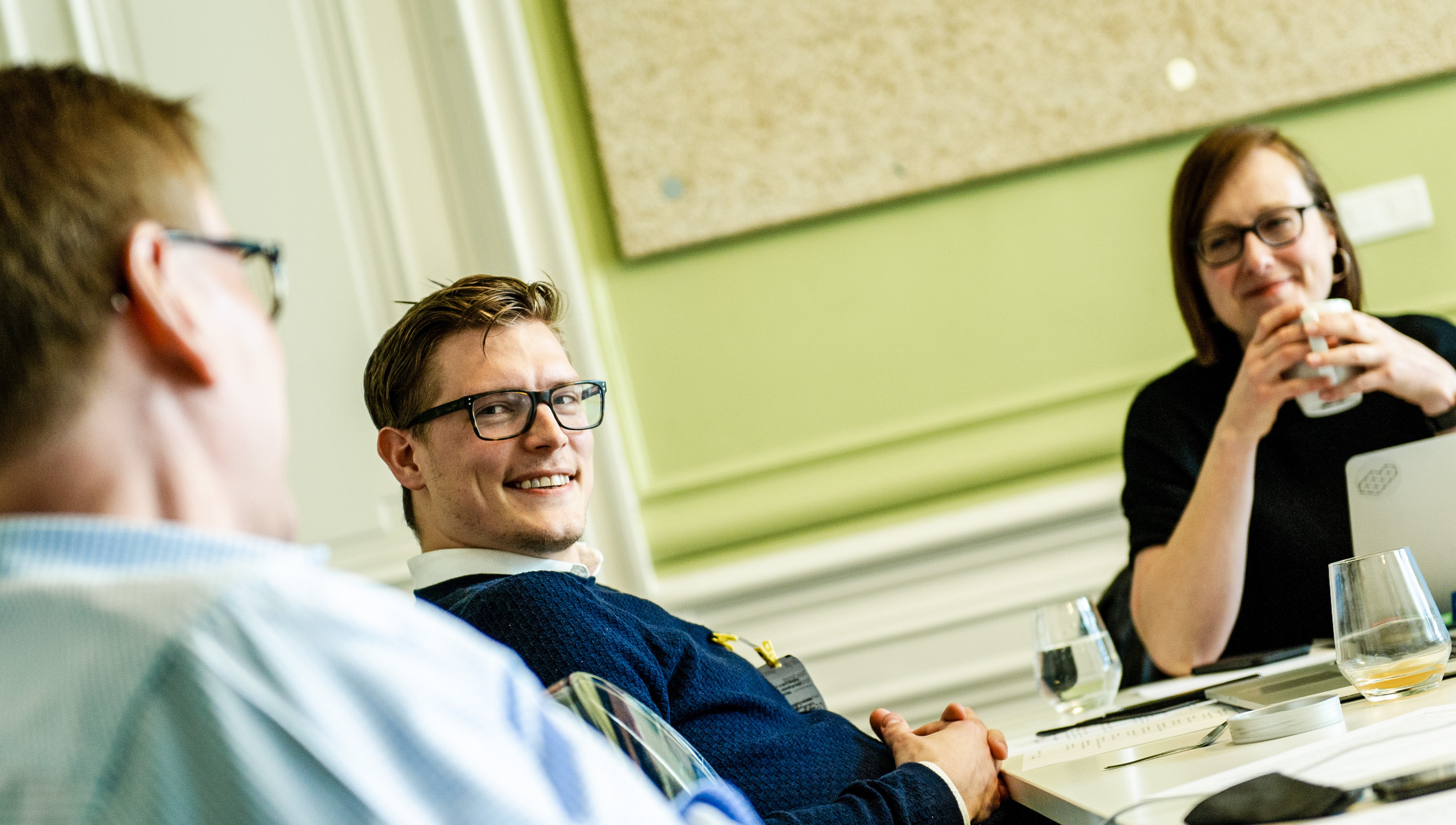How can we produce more relevant news stories and at the same time promote the values of outstanding public service journalism? This is the key question facing Swedish Radio (SR) in constructing its new editorial algorithm. In this article, Olle Zachrison, Head of Digital News Development, explains how the system is empowering local editors across the country.
SR is Sweden’s national public broadcaster and leading audio company, with 1,900 staff stationed in over 50 locations around the country. Representing the whole population and covering both underreported areas and issues are central strategic ambitions as expressed in our new vision: “More voices and more powerful stories for greater understanding.”
Giving prominence to our unique public service values – what we call “SR values” – is at the heart of a year-long project to create an editorial algorithm for news from scratch. The algorithm is powered by “news values” – a system by which editors rate every one of the hundreds of news stories produced by SR every day. The pre-publication rating feeds the algorithm that in turn helps us automate and personalise the news experience for a wide and diverse audience.
The use of data and computational power does not mean we give up our editorial control. On the contrary, we are convinced that the new model increases the quality of our journalism. Not just the packaging and distribution but the actual content of the stories we produce.
Let us start by looking at our key objectives in setting up the new system:
- To make our digital news products more reliable and trustworthy by using the same system for rating news stories across the company as a whole.
- To enable a more sophisticated personalisation of news on our websites and in our app.
- To promote a more lively editorial discussion on what constitutes top-class news journalism.
- To facilitate new products that better serve and enhance the experience of our digital audience.
- To automate tasks that are resource-intensive and time-consuming for our online editors.
How Does The System Work?
So how does the system work? When an SR reporter files a story, she does it in the form of a news clip, an audio story customised for digital consumption. The stories are typically 1-2 minutes long and have to be understandable even in the absence of a traditional radio cue (the introduction spoken by the presenter or news-reader before a package is played). A lot of effort goes into making sure the first few seconds are compelling as they are vital to attract and maintain the listeners’ attention.
Our experienced news editors then rate the story based on three criteria:
1. The magnitude of the news story.
- Extraordinary: The story that dominates the day and is clearly most important.
- Large: SR-exclusives or events and socially important news that concern many.
- Standard: Average news stories that meet the basic requirements of providing new and relevant information.
- Light: News piece with a lighter touch, a narrower scope or curiosity that adds to the mix.
2. The degree to which public service values are met. Here we rate the story by assessing if:
- We are close to the audience, in areas and communities rarely covered (blank spots).
- We are reporting on unique voices of affected or concerned people.
- We are ”on the ground”, on location, out reporting in communities.
- Our reporting conveys strong emotions.
- It contains compelling, audio storytelling.
- The news item has arisen through dialogue with our listeners.
3. The life span:
- Standard is the default but we can also give any individual news piece a shorter or longer life span.
- Short: A news piece that is of high importance when published but quickly becomes outdated or irrelevant. Examples: sports news, traffic disturbances.
- Long: A news item with long-lasting value and enduring relevance. Examples: an investigative story or in-depth analysis.

Once all these values are set by the duty editor, the system attributes a digital score to the story. This score determines the story’s position relative to all others in our audience-facing listings, in news playlists in our app and on our news websites.
Importantly, the score immediately starts decreasing the second a story is put out. For example, if we publish a significant story that scores high on “SR-values” and has a standard life-span, this story might have 25 points when published. On a normal day, that would take the story to the top of the website or the start of the news playlist in the SR audio app. A couple of hours later, the score will have come down. At this point, even a standard story that is given an average score on “SR values” will surpass the first story as freshness carries significant weight in the algorithm.
Before we launched the pilot version of the system for SR’s 26 local newsrooms, all curation of news stories on SR websites and playlists was done manually. The digital editor would have to decide at any given moment what story to lead with, what story to put in second place and so on. Following a trial period, SR’s local newsrooms began – in September 2020 – to trust the algorithm to automatically perform this task for them. This saves us a significant amount of time and also makes editorial decision-making less dependent on who happens to sit at the desk that day.
Saving Time, Improving Content
Currently, we have around 40 individual playlists (and websites) for news at SR. On top of the national playlist, which is updated around the clock, there are 26 playlists for local news (one for every local station in the countrywide network), and separate playlists for genres like sport, science, culture, and around ten playlists in languages other than Swedish (like Finnish, Arabic, Farsi/Dari and English). As a result, many working hours are spent on simply ranking stories up and down as the day unfolds. The time we save can now be devoted to strengthening the storytelling, improving the headlines or finding better-related content.
In addition, requiring editors to evaluate our news pieces in this way leads to incredibly fruitful editorial discussions about the actual importance of each story we publish. Why do we rate this investigation as a “standard” news piece when months of work has gone into it? Is there something we could develop in this story to raise its score to “large”?
Getting Out Of The Office
We have found the conversation about “SR values” particularly important. Could we develop the elements in this story that we have identified as bearers of great PSM-journalism? For example, being out of our studios and in contact with the public is a crucial part of our legitimacy. So, is there a unique perspective or personal experience we could add? Our evaluation of the project has shown something we are particularly proud of: that the new system encourages reporters to get out of the office more often, which makes for more vivid audio storytelling on the reality of people’s lives.
To sum it up: by giving extra weight to “SR values”, we ensure that we remain true to our vision and the goal of creating a genuinely “public service algorithm”. In addition, it is already apparent that we can increase the quality of our journalism by carefully building more tech into the editorial process. For some colleagues, this may have come as a surprise: that an algorithmic system can actually inspire meaningful discussions about the very core of our journalism.
Another important question is who conducts the evaluations that feed the algorithm on a daily basis. Our view is that journalists closest to the stories are in the best position to give their stories a rating. That responsibility is therefore entrusted to our local news desks who have an excellent knowledge of the stories that are most important to their respective audiences. This decentralised approach ensures local credibility and should reduce the risk of a metropolitan bias in the system.

The SR news algorithm is now launched in its first iteration. This autumn we are rolling it out to local websites and playlists. As with all complicated projects, there have been technical setbacks and new editorial discoveries appear along the way. For example, it has been harder than expected to get local desks to use the whole range of news values. Most news items are rated as “standard” which impedes the algorithmic stretch needed for a really dynamic mix.
In the next phase, we aim to use it to curate our national playlists/websites and to give listeners the choice of an even more personalised service. This could be done by adding more clips from a certain geographic area into their individual playlists. Having a data set of historical news values is also a great asset. For instance, we can provide the app user with the option to catch up on the most important news stories from a period of their choice.
Further ahead, we would like to explore truly personalised, AI-supported playlists that are based on the user’s past behaviour and expressed interests. However, we will do this in a way that respects the individual’s right to remain anonymous. And we always stay true to our core mission as a public service broadcaster: to inform all listeners about the most important news of the day and making sure they are also able to find items that surprise and broaden their knowledge and perspectives.
Core Of The System
Combined with an overall strategic drive to focus on digital audio regardless of platform and to atomise our news reporting into clips, the SR algorithm has the potential to become the core of a system that is employed across a wide range of platforms, from the smartphone to the modern car. If you ask a voice assistant for “news about the pandemic in Stockholm”, we should be able to give you not just the most recent few clips about the subject but the most relevant ones, based on our editors’ latest evaluation of how well they meet a broad set of news and public service values.
For some, both outside and inside media companies, the word “algorithm” carries negative connotations, especially in relation to free speech and independent journalism. The term is associated with commercially driven tech-products that run without human intervention to maximize clicks and profit. That is why it is so important to stress that the editorial eye has been guaranteed a central role in the SR process. Algorithms may help us automate time-consuming tasks and better serve a diverse audience. However, human judgement and lively editorial discussions in the newsroom will remain as important as ever. At every step in our development process, we must also go back to that initial question: how will this increase the quality of our news output?

Olle is a member of our JournalismAI Collab, an experimental collaboration between 20+ news organisations worldwide to explore new AI-powered journalistic solutions.
JournalismAI is a project of POLIS, supported by the Google News Initiative. If you want to stay informed about JournalismAI activities, you can sign up for our monthly newsletter.







News is an industry and a product. It may be (it probably is) that access to news is a public good. However, if the public good is nourishing public discourse, news may be a liability. That is to say, debate by way of news only or predominantly, is not possible; there’s a category error.